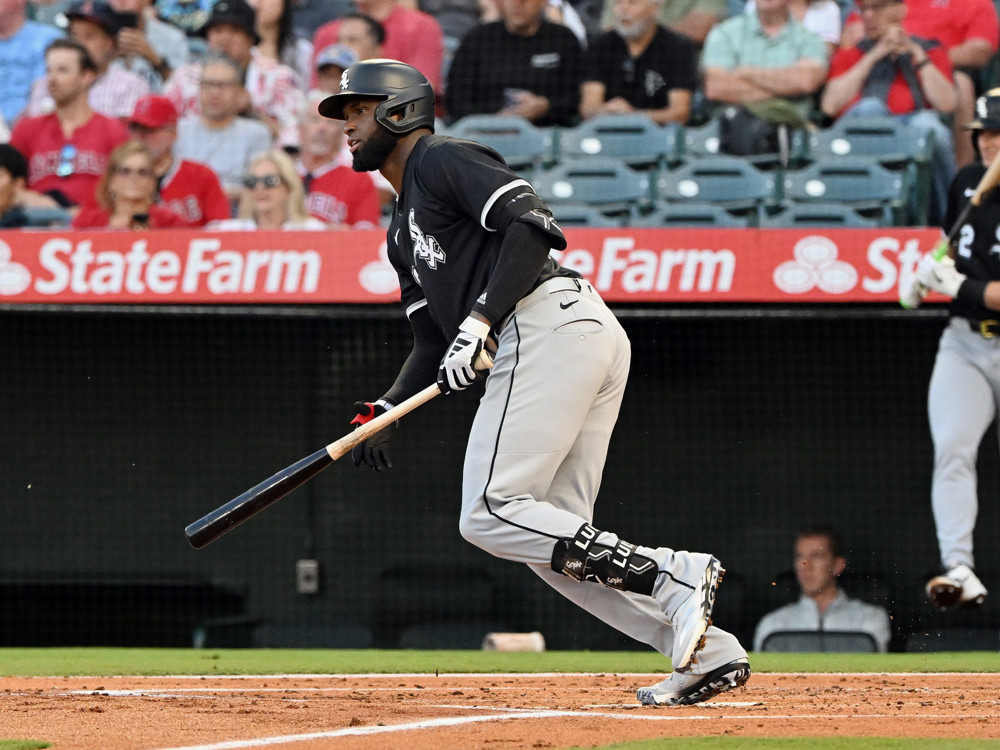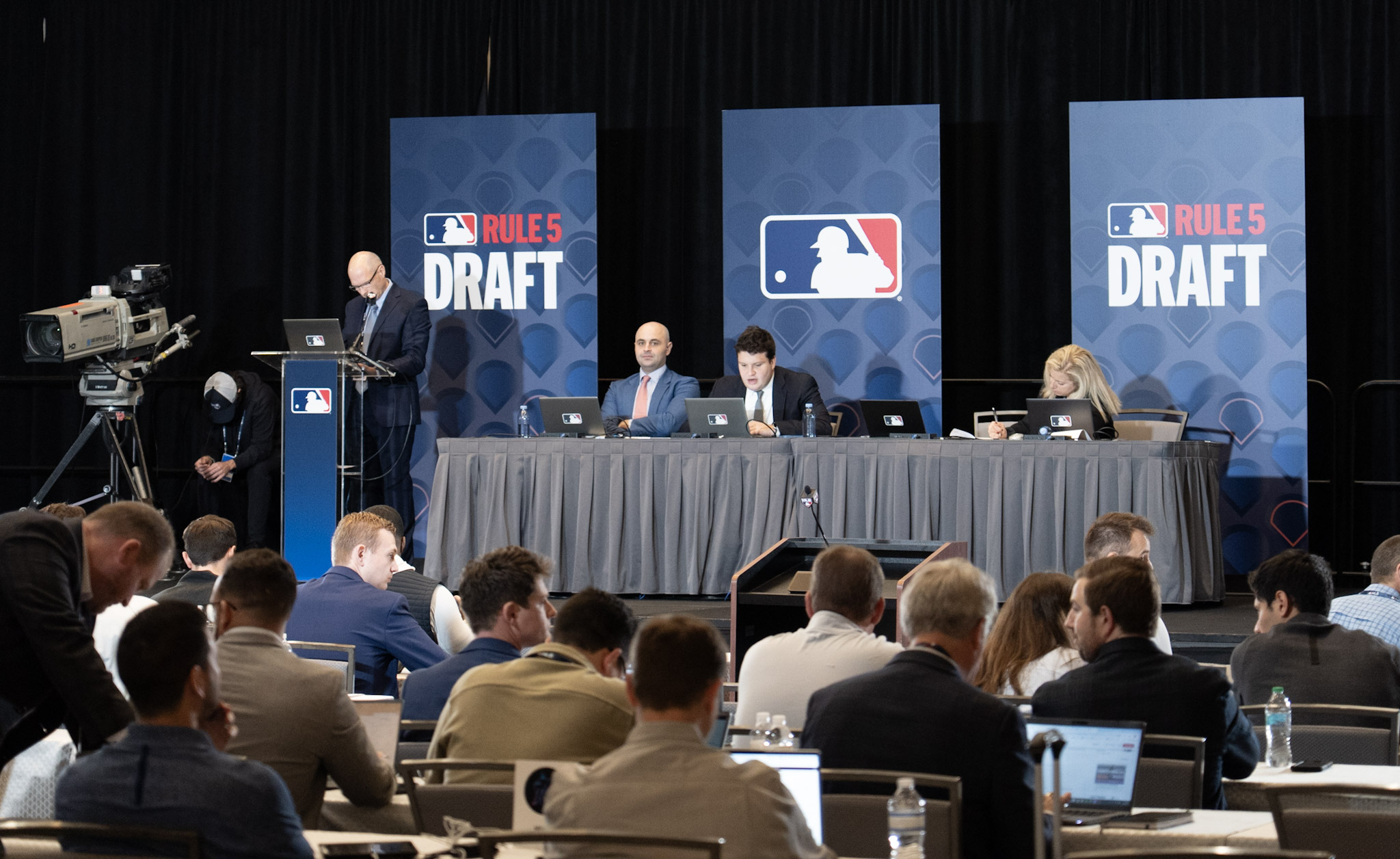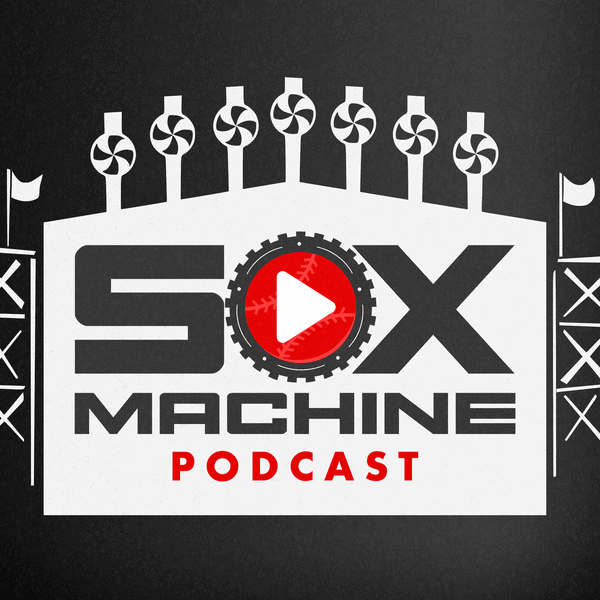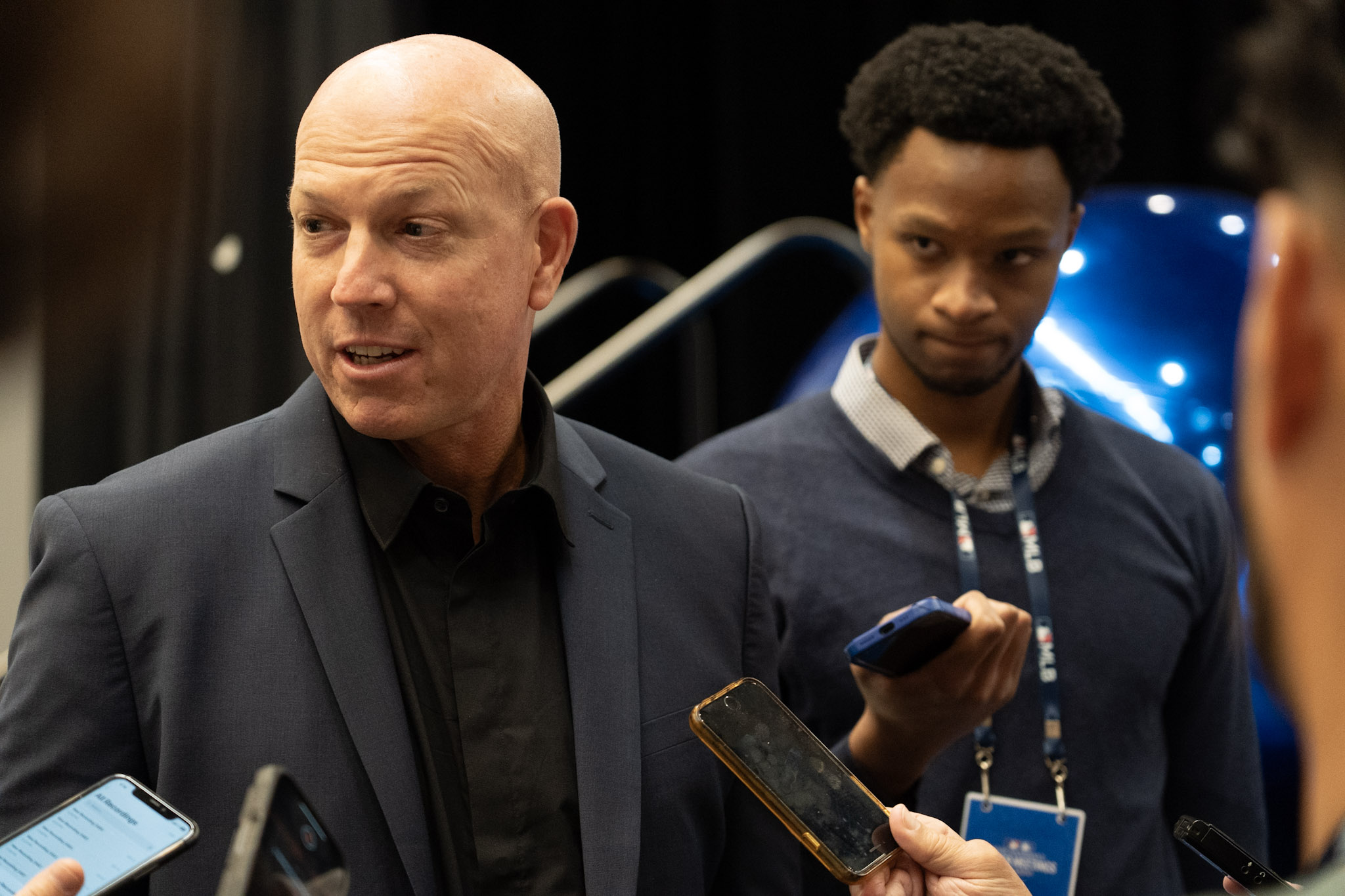At 10-6 since the All-Star break, the real key numbers to watch for the White Sox are finally the only ones that ever mattered: the gosh-dang final score!
But West Coast games feel like they take forever to arrive, and there's plenty of other nuggets to zero in on over the course of the day.
Colson Montgomery's contact rate
Aaron Judge. Shohei Ohtani. Kyle Stowers. Kyle Schwarber. Bryce Harper. Are all among the proud few qualified regulars with a contact rate under 70 percent, so with his 67.8 percent mark through almost 100 plate appearances, Colson Montgomery is in good company.
Or read another way, elite power is the only way to overcome this volume of swing-and-miss. A more middling amount of pop looks more like Ryan McMahon, who has the second-lowest qualified contact rate (67.1 percent) this year, and is closing in on his sixth season out of the last seven with 20 or more homers, but has yet to produce an above-average offensive campaign.
Maybe Montgomery simply has elite power. Swings like this are exclusively the territory of freaks.
He's slugging .567 and has hit eight home runs in 12 games since switching to a torpedo bat after all, and Montgomery's got the bat speed for flurries like this. Among big leaguers who have take 50 swings this year, Montgomery is top-15 in the sport in average bat speed, and top-10 in swings that hit 75 mph or higher per Statcast. He didn't need a new bat to have raw power, but it'd be compelling if his new tool gives him more margin for error in terms of making contact.
| Out-of-zone contact | In-zone contact | Total contact | |
|---|---|---|---|
| Old bat | 25.9% | 73.5% | 60% |
| New bat | 45.8% | 83.1% | 74.8% |
Montgomery is only at 97 big league plate appearances. So not only is his sample without a torpedo bat colored by also happening to be the first couple weeks of his major league career, it's also tiny to the point of meaninglessness. And since the biggest area of gain is out-of-zone contact, which is good for avoiding strikeouts but not so good for hitting the ball hard, Montgomery's chase rate being north of 30 percent with both bats is the real development hurdle.
But if his new equipment is aiding a compact swing path, maybe he'll have more margin for error as he works to shave it.
Chase Meidroth's defensive metrics at shortstop
It feels like eons ago, before the trade deadline, Lenyn Sosa's offensive breakout/first base foibles pushed Miguel Vargas to first, which in turn pulled Colson Montgomery to third and returned shortstop to Chase Meidroth. But Meidroth's early strong defensive metric scores have started to take on a little bit of water.
| Innings at SS | Defensive Runs Saved (DRS) | Outs Above Average (OAA) | Fielding Run Value (FRV) | |
|---|---|---|---|---|
| Meidroth | 522 | -1 | 3 | 2 |
| Montgomery | 126 | 2 | 1 | 1 |
Moreover, most of Meidroth's issues seem to extend from his arm being stretched from short. The FRV breakdown shows all his value coming from his range, with his arm playing as neutral, and Statcast has Meidroth better at making plays when moving toward first than away. Statcast also rates his raw throwing strength as below average, and six of his seven errors are of the throwing variety, taking on the familiar look of him rushing or overthrowing to compensate.
Now that Vargas is on the injured list, Sosa is back to playing first base and Curtis Mead is on the active roster, the winds are shifting back toward Montgomery at short and Meidroth at second base anyway. Recent results suggest that might be the optimal setup.
Curtis Mead's chase and pull rates
Speaking of which, whenever Mead does start getting regular run, it will at the very least provide a view for why addressing his biggest bugaboo hasn't triggered a breakout (although seeing Luis Robert Jr. also reduce his chasing to no reward primes us for what to expect).
| Mead MLB stints | Out-of-zone swing rate | Pull rate | Hard-hit rate |
|---|---|---|---|
| 2023 | 33.9% | 37.1% | 22.6% |
| 2024 | 36.1% | 38.7% | 36.2% |
| 2025 | 23.8% | 34.5% | 38.1% |
Mead tapping into his above-average raw power with a fly ball-oriented approach featuring a healthy amount of pulling reads as the path to him becoming a big league regular. But his results amid scattered playing time in 2025 have resembled the crossroads the White Sox offense as a whole faced at the All-Star break: The improved plate discipline had yet to produce better fastball performance.
As some Sox hitters have explained, the initial efforts to improve swing decisions can take the form of seeing the ball deeper, being less aggressive and spraying drives to the opposite field. So it fits the model that the one White Sox plate appearance Mead has had saw him lift and drive a fastball decently well, only to see it die in front of the right field warning track.
Slugging just .353 against four-seamers for the year, Mead has produced below-average run value against velocity. If that's something he's able to build upon down the stretch, it'll be worth tracking if it comes from building upon his improved discipline, or sacrificing some of it to catch more balls out front.
Kyle Teel and Edgar Quero's glove-side framing numbers
Teel and Quero still represent the two youngest catchers in the majors. The degree to which they have largely held their own, provided productive offense and steadily received praise for their improvements from teammates speaks well to their development.
That said, they have the lowest (Quero) and third-lowest (Teel) called-strike rate among qualified catchers in MLB, per Statcast's framing numbers, although the leaderboard also serves to explain why the White Sox were prepared to make the leap to work with both of them.

These current figures represent an uptick from where Quero stood in mid-June, when the White Sox openly acknowledged that the state of his framing justified more run for Teel. But it's a downturn for Teel, who was running around 40 percent in his early going.
Catching coach Drew Butera emphasizes that Teel and Quero have different bodies, setups and strengths, and there aren't really mechanical cues that they can take from one another, but both have uniquely struggled at framing pitches to their glove side. It's been an issue for Quero long enough that he had already been working to load his glove from his body more.
Generally, every rookie catcher arrives in the majors loading their glove from the ground and selling out entirely to steal lower strikes, and the last two months will speak to how much either gets comfortable enough to start stabilizing other areas.
Luis Robert Jr. against right-handed fastballs
For at least another year or so going forward, Robert's development is an organizational priority once more, at least assuming Chris Getz isn't bluffing. Finding out why his pop has diminished against right-handed pitching is important enough that his garbage-time homer on Wednesday might have been just as important as Montgomery's blast.
On multiple occasions, Robert has explained that right-handed sliders running away from him are his white whale. Such concerns are absent against lefties, which is why he's continued to thrash them (157 wRC+) even in a season that otherwise has often looked like his career nadir.
As he's worked to chase sliders (and all pitches) out of the zone less, Robert has struggled to keep his reduced aggression from bleeding over onto pitches he wants to jump all over: fastballs in the zone. Home runs like Tuesday night represent his ideal best of both worlds, where he's seeing the ball deep to maintain his plate discipline, using his plus bat speed as makeup speed to catch up to fastballs and is still strong enough to leave the park to right field.
| Overall chase rate | In-zone fastball swing rate | In-zone fastball contact rate | ISO vs. fastballs | |
|---|---|---|---|---|
| 2021 | 39.7% | 75.9% | 82.2% | .203 |
| 2022 | 41.4% | 86.2% | 85.6% | .130 |
| 2023 | 38.6% | 80.7% | 75.7% | .385 |
| 2024 | 35.6% | 72.2% | 78.4% | .196 |
| 2025 | 31.8% | 75.4% | 79.7% | .224 |
The 2023 season is both Robert's masterpiece and such a feat of extremes that he understandably worked to improve the contact and swing decision issues that were present in the following seasons. But as the White Sox have seen Robert wander through the wilderness since, they have discussed plenty whether accepting him chasing or swing through more fastballs in the zone is worth it to restore his old aggression.
Some club officials have even debated whether Robert should deploy much of a two-strike swing at all, or whether three A-swings with his power and bat speed has more value than avoiding strikeouts. So with his total season numbers already drifting away from his 2024 passivity and closer to his 2025 aggression -- at least within the strike zone -- the rest of Robert's season bears watching to see how much more ground he can cover in getting back to his old self.





